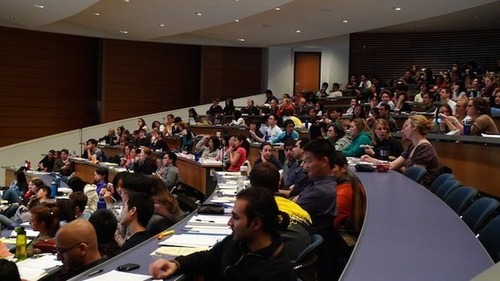See on Scoop.it – educación líquida
Think back to when you learned how to ride a bike. You probably didn’t master this skill by listening to a series of riveting lectures on bike riding. Instead, you tried it out for yourself, made mistakes, fell down a few times, picked yourself back up, and tried again. When mastering an activity, there’s no substitute for the interaction and feedback that comes from practice.
What if classroom learning was a little more active? Would university instruction be more effective if students spent some of their class time on active forms of learning like activities, discussions, or group work, instead of spending all of their class time listening?
A new study in the Proceedings of the National Academy of Sciences addressed this question by conducting the largest and most comprehensive review of the effect of active learning on STEM (Science, Technology, Engineering and Mathematics) education. Their answer is a resounding yes. According to Scott Freeman, one of the authors of the new study, “The impact of these data should be like the Surgeon General’s report on “Smoking and Health” in 1964–they should put to rest any debate about whether active learning is more effective than lecturing.”
See on www.wired.com










